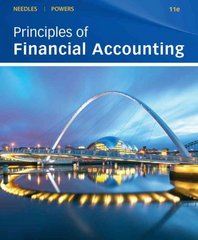Answered step by step
Verified Expert Solution
Question
1 Approved Answer
1. (TCO 3) During the current year, Exercise Corporation sold equipment for $210,000. The equipment had an adjusted basis of $140,000 at the sale date,
1. (TCO 3) During the current year, Exercise Corporation sold equipment for $210,000. The equipment had an adjusted basis of $140,000 at the sale date, and was purchased a few years ago for $240,000. MACRS deductions claimed on the equipment during the period of time Exercise owned it amounted to $100,000. ADS depreciation on the equipment was $55,000. As a result of the sale, which adjustment to taxable income is needed to determine E&P? (Points : 5) No adjustment is required. Add $45,000 to taxable income. Subtract $45,000 from taxable income. Add $75,000 to taxable income. None of the above Question 2.2. (TCO 3) Which statement is false? (Points : 5) Most countries that trade with the United States do not impose a double tax on dividends. Tax proposals that include corporate integration would eliminate the double tax on dividends. The double tax on dividends may make corporations more financially vulnerable during economic downturns. Many of the arguments in support of the double tax on dividends relate to fairness. None of the above Question 3.3. (TCO 4) Five years ago, Ruth transferred property she had used in her sole proprietorship to Green Corporation for 1,000 shares of Green Corporation in a transaction that qualified under 351. The assets had a tax basis to her of $100,000, and a fair market value of $270,000, on the date of the transfer. In the current year, Green Corporation (E&P of $800,000) redeems 250 shares from Ruth for $220,000 in a transaction that does not qualify for sale or exchange treatment. With respect to the redemption, Ruth will have a _____. (Points : 5) $195,000 capital gain $220,000 capital gain $195,000 dividend $220,000 dividend None of the above Question 4.4. (TCO 4) Cone Corporation has 500 shares of stock outstanding: Pearl owns 170 shares, Jessica owns 95 shares, and Murray owns 55 shares. Bridge Partnership owns the other 180 shares in Cone Corporation. Pearl, Jessica, and Murray, all unrelated, are equal partners of the Bridge Partnership. In applying the stock attribution rules under 318, _____. (Points : 5) Pearl owns, directly and indirectly, 350 shares in Cone Corporation Murray owns, directly and indirectly, 115 shares in Cone Corporation Jessica owns, directly and indirectly, 95 shares in Cone Corporation Bridge Partnership owns, directly and indirectly, 180 shares in Cone Corporation None of the above Question 5.5. (TCO 5) All of the following statements are true about corporate reorganization except _____. (Points : 5) taxable amounts for shareholders are classified as a dividend or capital gain reorganizations receive treatment similar to corporate formations under 351 the transfers of stock to and from shareholders qualify for like-kind exchange treatment the value of the stock received by the shareholder less the gain not recognized (postponed) will equal the shareholder's basis in the stock received All of the above Question 6.6. (TCO 5) Fruit Corporation transfers assets (fair market value of $3,000,000 and a basis of $750,000) to Nut Corporation. Fruit receives Nut voting stock worth $2,600,000 and $400,000 cash. Nut Corporation assumes none of Fruit's $600,000 liabilities. Fruit distributes the Nut stock and its liabilities to its shareholders. Fruit Corporation recognizes gain on the transfer of _____. (Points : 5) $0 $400,000 $600,000 $1,000,000 None of the above Question 7.7. (TCO 5) In which type of divisive corporate reorganization do the shareholders receive stock in another corporation without relinquishing any of their stock in the original corporation? (Points : 5) Type A consolidation reorganization Reverse Type B reorganization Type D split-off reorganization Type D split-up reorganization Type D spin-off reorganization. Question 8.8. (TCO 6) A parent-subsidiary controlled group exists when one corporation _____. (Points : 5) owns 100% of the voting power and stock value of another corporation owns at least 80% of the voting power or stock value of another corporation owns at least 80% of the stock value of another corporation owns at least 80% of voting power of another corporation None of the above Question 9.9. (TCO 6) Which corporation is not eligible for consolidated return status? (Points : 5) Tax-exempt charitable corporations Insurance companies Corporations formed outside the United States Partnerships All of the above Question 10.10. (TCO 6) George, Joseph, and Roz constitute an affiliated group of corporations. Which tax effect becomes more restrictive if an election is made to file on a consolidated basis? (Points : 5) Choice of members' tax accounting methods Use of the lower tax rate brackets Use of the $40,000 AMT exemption Choice of members' tax year-ends
Step by Step Solution
There are 3 Steps involved in it
Step: 1

Get Instant Access to Expert-Tailored Solutions
See step-by-step solutions with expert insights and AI powered tools for academic success
Step: 2

Step: 3

Ace Your Homework with AI
Get the answers you need in no time with our AI-driven, step-by-step assistance
Get Started


